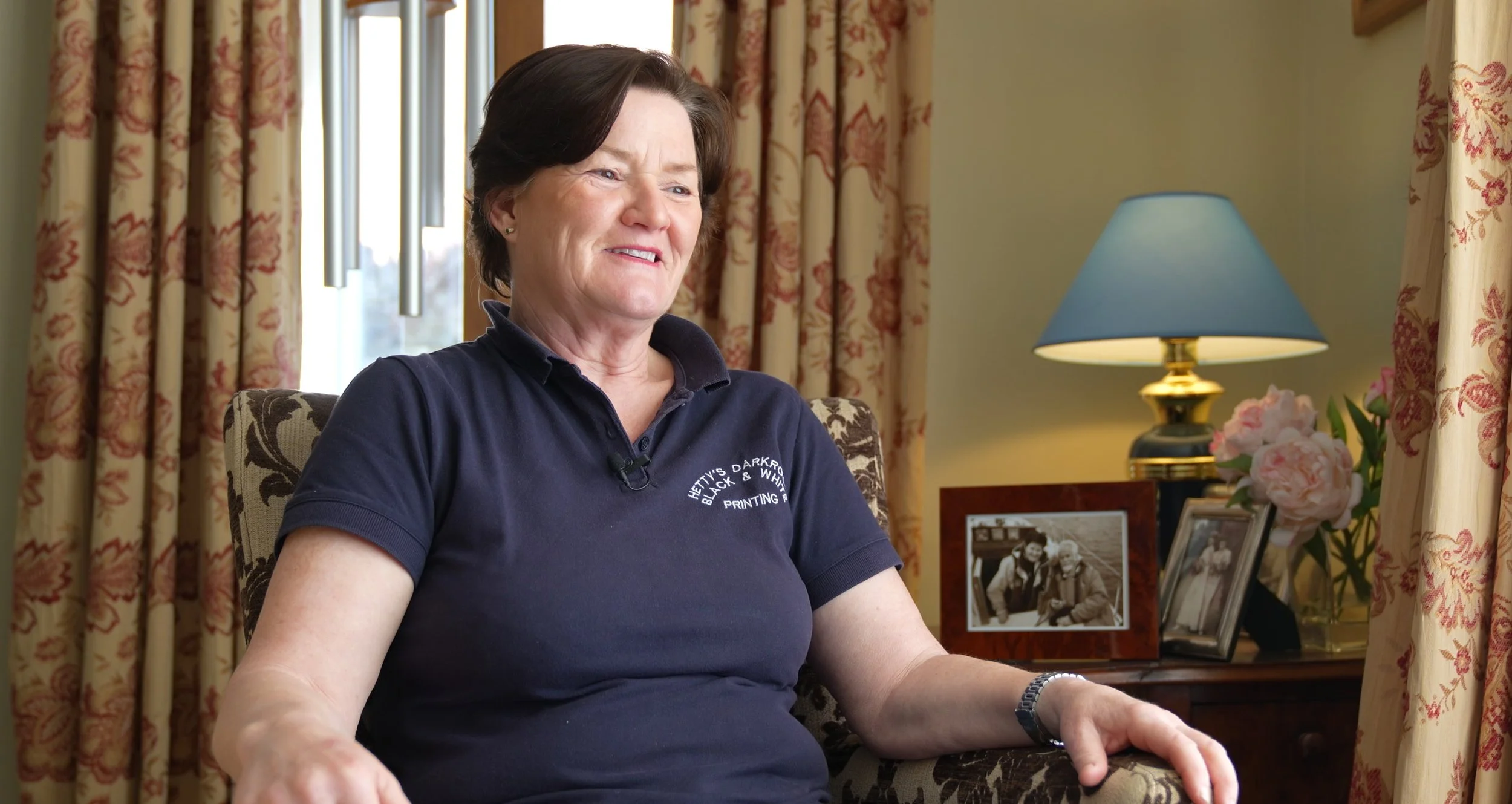Hetty Walsh: Forty Years in the Darkroom
Hetty’s Darkroom
“Sometimes people used to come when I was printing, and the red light was on. I swear it was like a confession box. They’d sit down and open up, and I’d hear their life history. Sometimes they’d hear mine.”
For forty years, Hetty Walsh lived in the glow of the darkroom, mastering the craft of black-and-white printing and building a reputation as one of Ireland’s finest printers. With 27 Kodak awards and a client list that included some of the country’s leading photographers and international stars, her work under the banner of Hetty’s Darkroom quietly shaped Irish photography.
On 12 February 2022, before she closed her darkroom for the last time, I recorded a documentary-style interview with her. We spoke about her life and her work, and I also filmed her developing, printing, and working under the red light. She was a natural. We only needed one take, and what follows here is both a written portrait and part of a larger project: a film that will preserve her story, her craft, and her legacy for future generations.
Early Fascination
I asked her where it all began.
“In my father’s shop in Straffan,” she said. “He ran a grocery and a newsagent, and I’d sit for hours leafing through newspapers. The Irish Times had the best pictures, the angles, the lighting. I learned a lot just by looking at them.”
A science teacher at school started a camera club. At first, many students joined, but in the end, Hetty was the only one who stayed. “That meant I got one-to-one lessons in printing,” she laughed. By sixteen, she had a motorbike and was riding ten miles to assist a local wedding photographer, earning £10 a day and learning portraiture on the job.
Training Years
I asked how she transitioned from passion to profession.
In 1981, Hetty joined Tony O’Malley’s studio on a training scheme. She began with black-and-white, then moved into colour and E6 processing. “You weren’t allowed near the studio until you’d done everything else,” she remembered. “We had to write weekly reports of everything we learned. But no matter where I went, they kept pulling me back into the darkroom. They said I just had a knack.”
By her early twenties, she was running darkrooms, printing 10–12 hours a day. “I must have processed 100,000 rolls of film and printed half a million pictures in four years,” she said. That relentless practice honed the skills that would define her career.
Founding Hetty’s Darkroom
In 1992, she decided to go out on her own. Friends helped her build a darkroom in a shed in Monkstown. One plumbed the water, another built the walls. When asked what she would call it, she laughed and said, “Hetty’s Darkroom.” The name stuck, and soon the clients came.
Photogenic Studios, Applebee, Priory Studio; her reputation spread quickly. And then the awards began. “It got embarrassing after a while,” she said with a smile. “Every time I won, Kodak’s Peter Byrne would turn up with champagne. He told me, ‘I’ve never brought so much champagne to one lab in my life.’”
Famous Clients, Quiet Hands
I asked her about the clients and assignments she remembered most.
Though often uncredited, Hetty printed for some of Ireland’s most respected photographers. She worked closely with Bill Doyle, whom she called the “Henri Cartier-Bresson of Ireland.” She produced prints for John Minihan, including his famous Seamus Heaney stamp, which became the most popular ever issued by An Post.
Her work also reached Hollywood. Through stills photographer Jonathan Hession, she printed for Daniel Day-Lewis and his wife, Rebecca Miller. “He was a lovely man,” she said. Pierce Brosnan once sent her a Christmas card in thanks.
And then there was the Joan Collins job. “I printed 1,500 images of her in one night,” Hetty told me. “After that, I felt like I knew her.”
Philosophy of a Printer
I asked her what advice she would give young photographers starting today.
“Anybody doing digital should try negative format,” she said firmly. “With film, every frame is precious. It teaches you discipline, how to expose correctly, frame properly, and respect the light.”
Her other golden rule? “Quality all the way. If you spend money on the camera, spend on the lens. And don’t buy a cheap enlarger. It has to be right the first time.”
Stepping into the Light
After four decades of printing, Hetty finally closed Hetty’s Darkroom. She had long been based in Kinsale, working just steps from the sea. Now, instead of long hours under the red light, she spends more of her time sailing, swimming, and volunteering with the RNLI. “Sometimes in winter I’d realise I hadn’t seen daylight for months,” she said. “Now I love being out in it.”
The red glow of her darkroom may have faded, but the prints she brought into being remain, from award-winning exhibitions to portraits of poets, actors, and ordinary families. Her legacy lives quietly in photographs across Ireland and beyond.

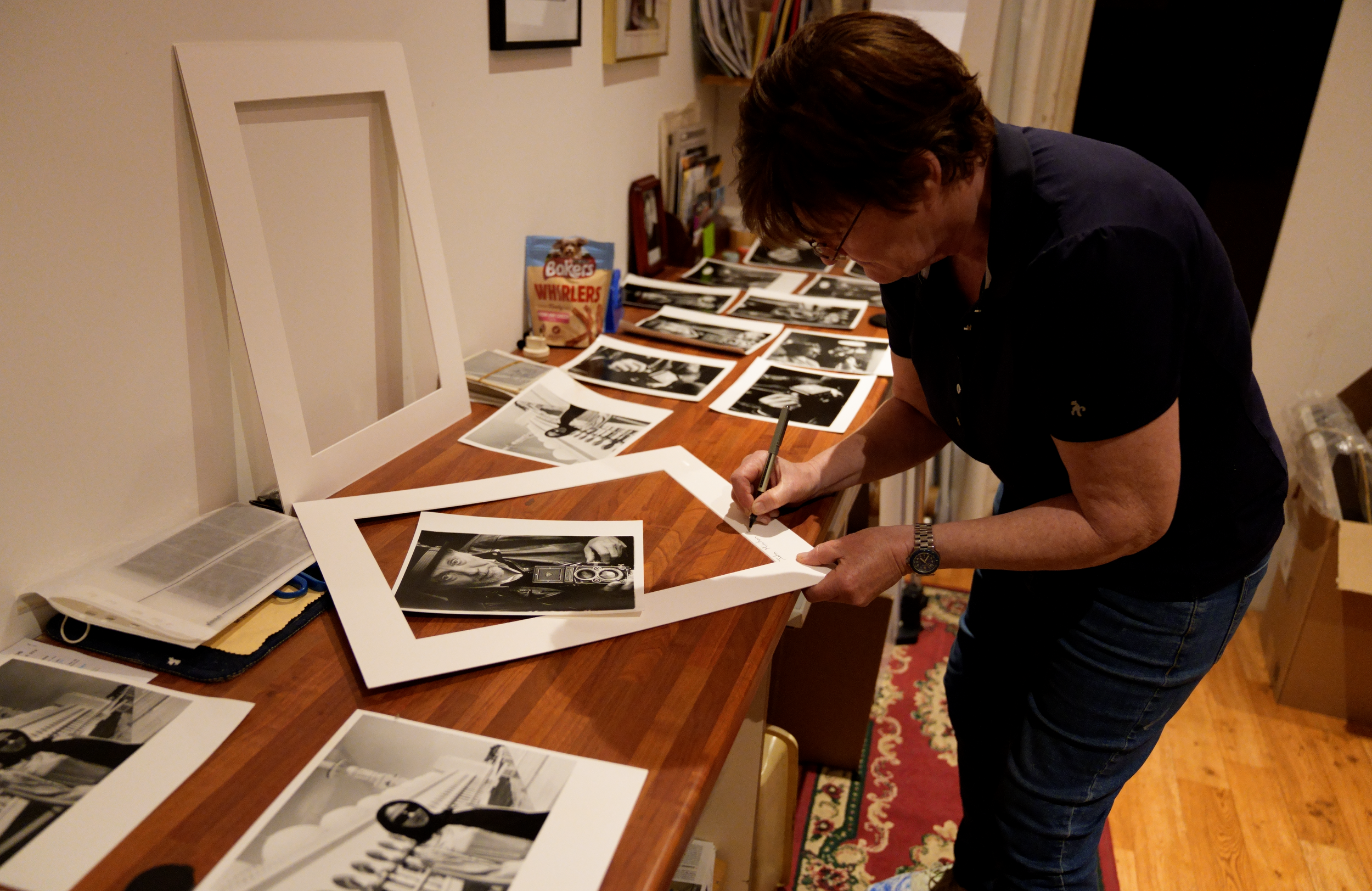


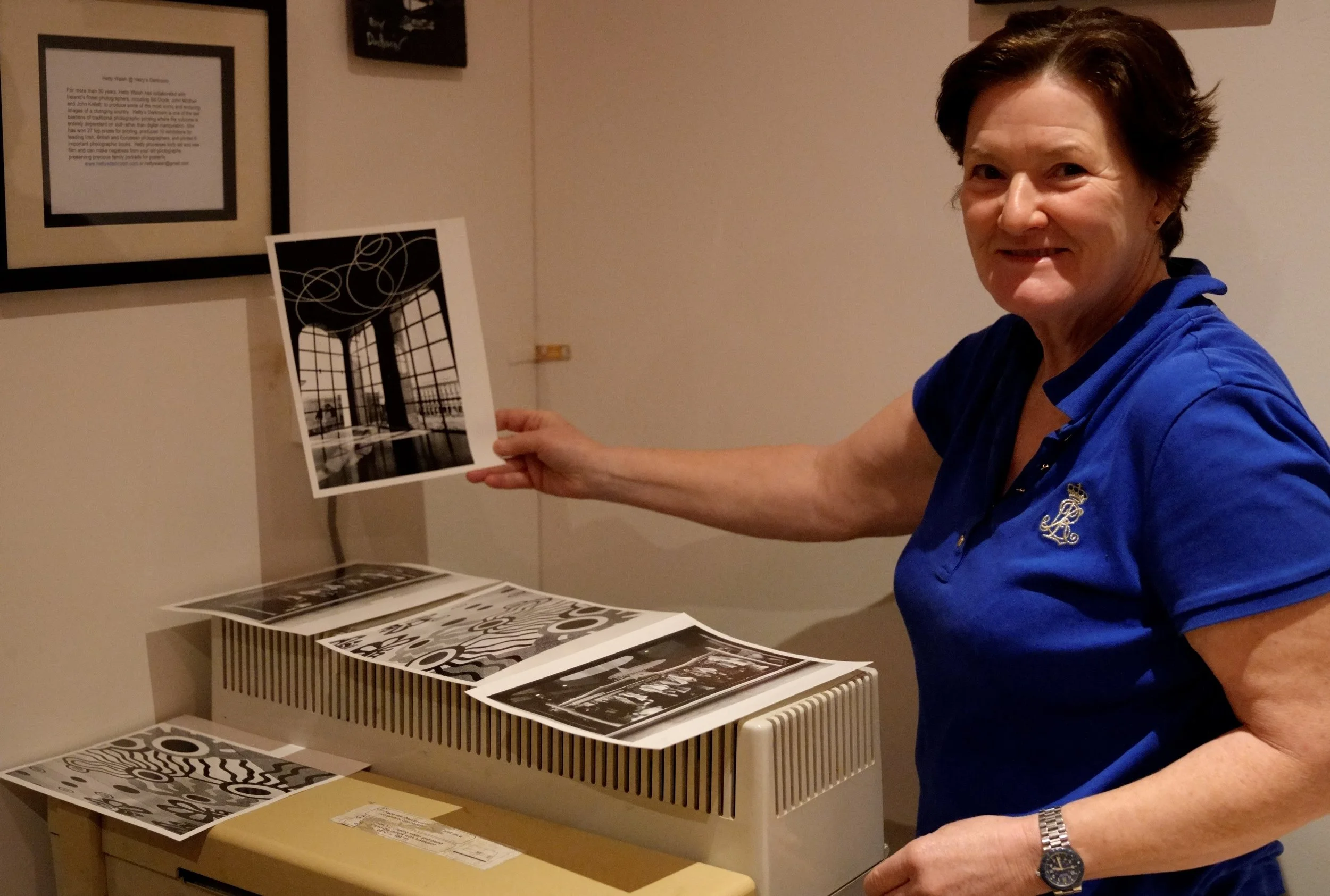
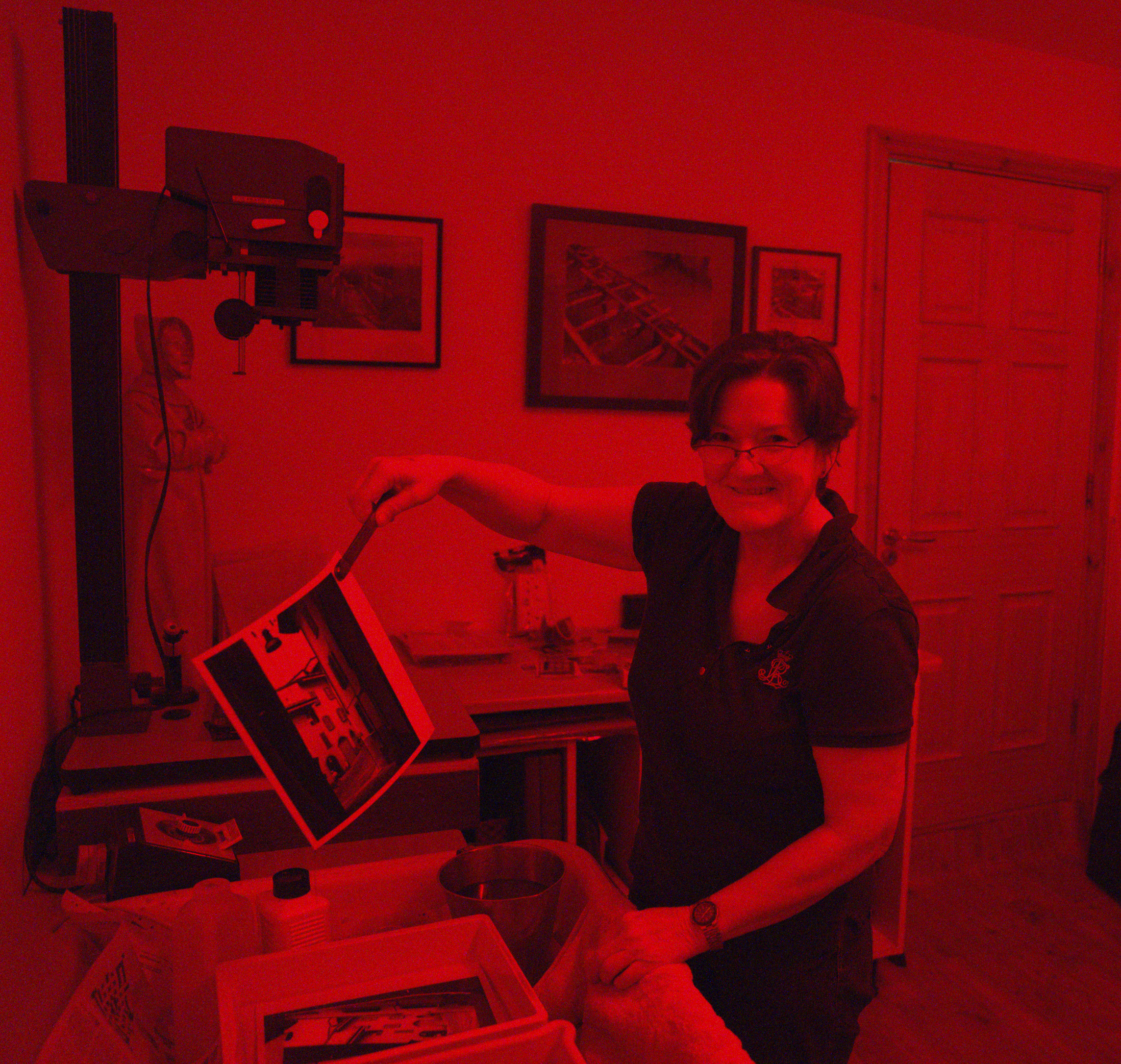



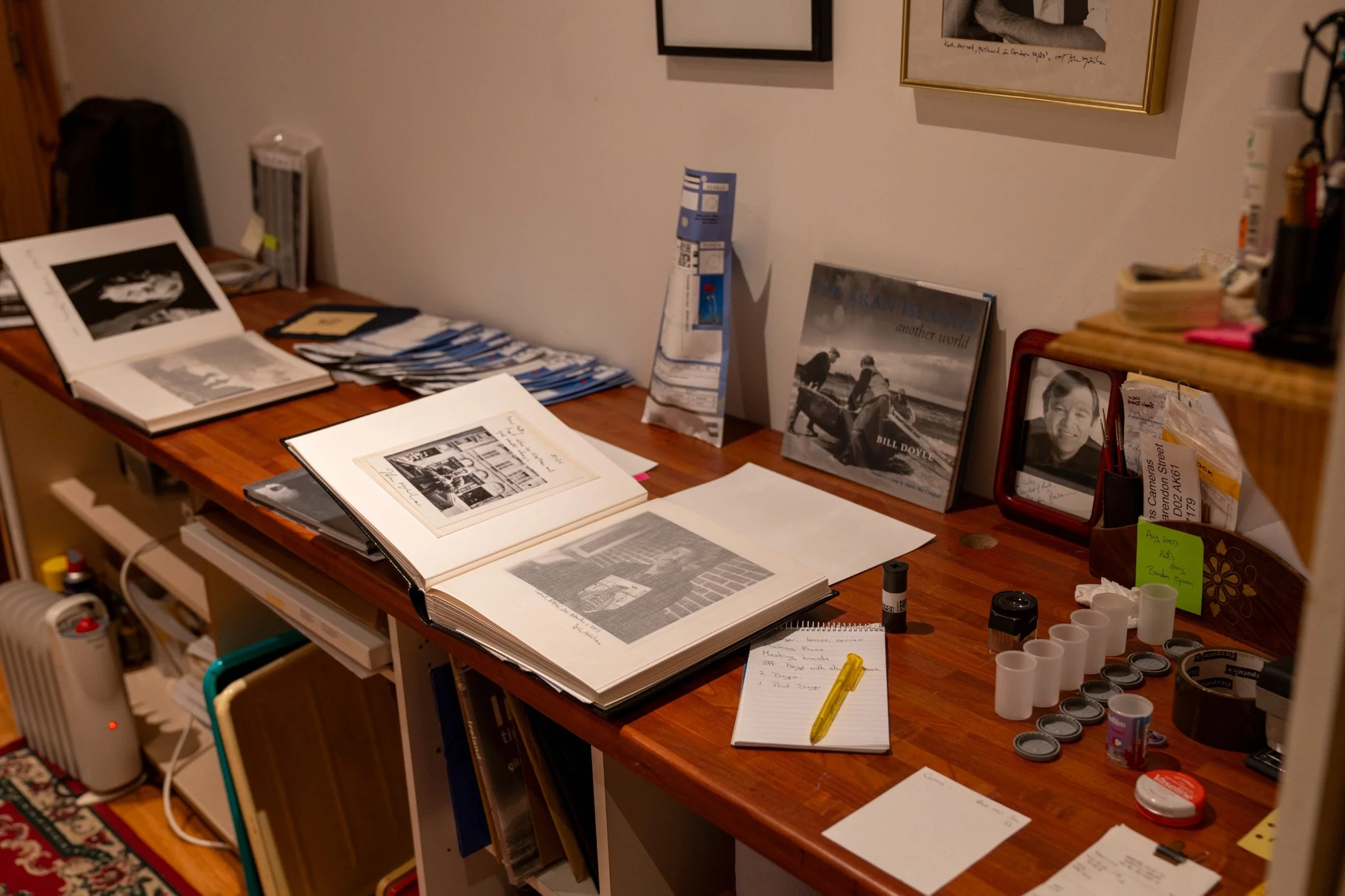
Hetty on Film
The project is now being edited into a short documentary film. Once complete, it will be published here as a lasting record of Hetty Walsh. Her story, her philosophy, and the legacy of Hetty’s Darkroom.
Coming soon on YouTube
Hetty Walsh: Forty Years in the Darkroom

